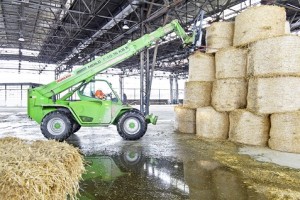Will biomass ever be able to compete across a broad range of products with fossil feedstock, that is so much easier to recover and has such excellent economies of scale? In his valedictory speech as professor in biomass valorisation, delivered last January, Johan Sanders (Wageningen UR) went into this general question. His answer is: yes, about one half of the chemicals can be produced from biobased raw materials. For the other half, as far as we can see now, fossil fuels will remain to be the cheapest resource.

A very short SWOT analysis
The disadvantages of biomass as a feedstock are well-known. It is dispersed in nature, and therefore incurs relatively high collection costs, which reduce the value of the feedstock as it stands on the land. Moreover, it consists of a great number of substances, and therefore requires elaborate separation techniques, both before and after processing. Moreover, we often have to restrict our operations to mild conditions and aqueous media to avoid decomposition. Therefore, opportunities for biomass as a feedstock will in general lie in niches where we can make use of fossil fuels’ (and petrochemical industry’s) weak points.
Although fossil feedstock is cheap and can be delivered in large quantities, its processing can be rather elaborate; i.e. virtually all processes have to start with an oxidation as a first step in functionalization. Often a great number of steps are required, each of which add to the price of the product. Particularly reactions with a large heat effect, which need intensive cooling or heating, and often high pressures as well, incur relatively high costs. As well as reactions that involve toxic or explosive reagents and therefore require extensive safety and precaution measures. Economically, most of these features require a high capital investment. Therefore, in more general terms, capital costs are the Achilles heel of petrochemical industry; certainly when the same product can be made from biomass. In general, biomass processing does not involve high temperatures or toxic intermediates, so its comparative advantage will be in the field of capital costs. We draw these considerations, and subsequent examples, from a paper to be published ‘Rules for the bio-based production of bulk chemicals on a small scale’ by Elinor Scott, Marieke Bruins and Johan Sanders.

Biomass feedstock is most suitable in chemical industry
In his speech, Sanders showed that capital costs do not contribute considerably to the production cost in the sectors of heating and transportation fuels. But they do in electricity production, and particularly in petrochemical industry. Therefore, as a general rule, biomass will have a hard time competing in the heat and transportation fuel markets (except of course, if you live in the middle of the woods in Sweden or Canada). Sanders is adamant and radical: the only industry in which biomass feedstock will generally be able to be competitive, is the chemical industry (and even then, not mentioned by Sanders: if petrochemical complexes have been completely depreciated, they will be able to compete as long as they stay alive technically). In other words: in other markets, biomass will need policy incentives such as subsidies or mandatory targets.
Scott et al. investigated the fraction of capital costs in the production of a wide variety of chemicals. They suggest that petrochemicals that have a high ratio of capital costs to variable costs (1.5 to 6), might be particularly vulnerable to competition from biobased chemicals. On top of their list are acrylic acid, butanediamine, hydrogen cyanide, and methionine. Adipic acid and epichlorohydrin (both chemicals in biobased industrial production already, or on the brink of it) are also on this list.
Better employment
Another side of this coin was nicely presented by Wageningen UR in its press release on Sanders’ valedictory speech: employment creation. Less capital investment will make room for more variable costs. This implies better employment in a biobased economy. Speaking about the Netherlands, Sanders estimated that substitution of half of fossil feedstock by biobased feedstock in the chemical industry could create 20,000 more jobs in agriculture, and 15,000 more jobs in the processing and chemical industry itself. Without any extra cost to the consumer, subsidies or mandatory policies by government – just through market forces. Studies showing prospects of new employment often have very little impact on actual policy; but the mere idea that there are sectors that will create new jobs may sound like music from heaven in industrialised countries, that will suffer more heavy job losses in the years to come, if predictions are not mistaken.
This series ‘Design rules for the biobased industry’ consists of the following articles:
#1: reduce capital costs and create jobs
#2: be lean on materials flows
#3: preserve structure
#4: elegance is beautiful
